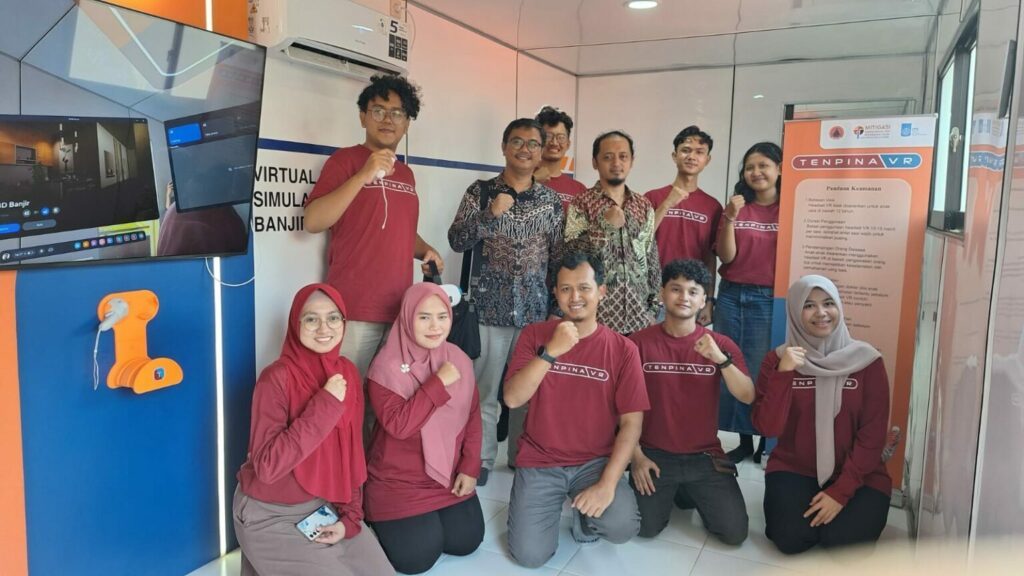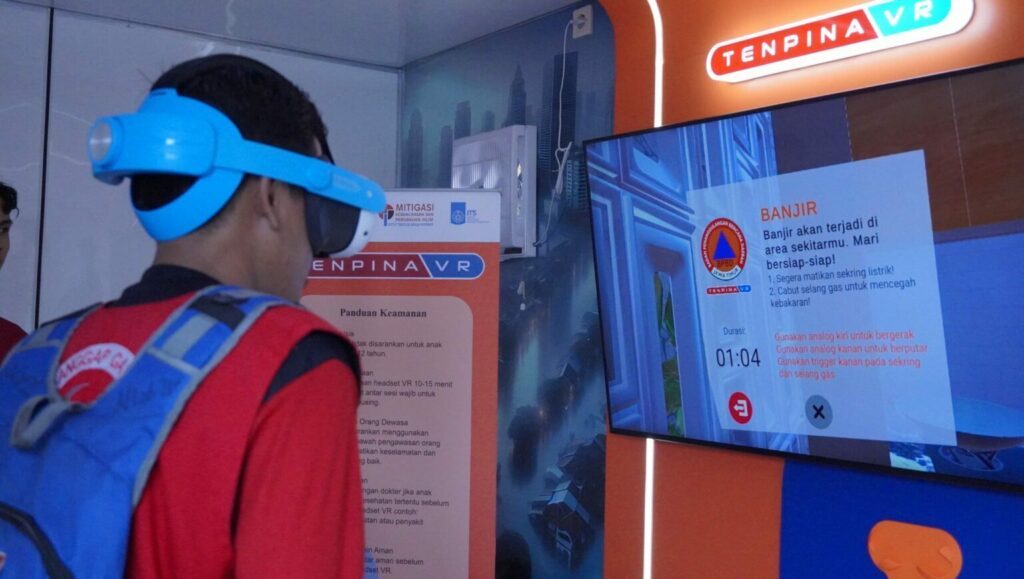TENPINA VR: Disaster Mitigation Innovation by Informatics Lecturers of ELECTICS ITS
Faculty
TENPINA VR research team, coordinated by Mrs. Siska Arifiani, S.Kom., M.Kom., a lecturer from the Department of Informatics at ITS, presents a virtual reality (VR) innovation as part of a disaster mitigation strategy initiated by BPBD East Java. This technology is designed to be used by visitors to the BPBD East Java Disaster Education Park, including students and the general public, to enhance their understanding of various disaster situations in a more interactive and in-depth manner.
Mrs. Siska explained that this VR is the result of collaboration between ITS academic community and is capable of realistically displaying disaster conditions. The development of this educational attraction is driven by the need to reduce the risks caused by the public’s lack of knowledge in disaster evacuation processes, as well as the need for more engaging and affordable educational media. The design process, which took one month, resulted in 3D asset representations, both for the application and its interior. “Alhamdulillah, all the designs were done directly by ITS students and lecturers,” she said.
This technology does not focus on just one type of disaster, but presents three main scenarios: flooding, fires, and earthquakes. “We provide simulations with realistic effects that include mitigation stages before the disaster, the situation during the disaster, and post-disaster conditions,” said Mrs. Siska. Through direct experience in a virtual environment, users can feel how emergency situations occur and learn the best ways to survive and save themselves.
In its development, this VR is equipped with visual effects with three main location scenarios: home, office, and factory areas. This adjustment aims to make the developed technology more relevant to the needs of the community in facing various types of disasters in different environments. Virtual Reality technology is used to present the reality of disaster evacuation processes, while a finite state machine is applied in designing realistic evacuation simulations.
As part of the Faculty of Electrical and Intelligent Informatics Technology (ELECTICS) at ITS, Mrs. Siska emphasized that this innovation is a manifestation of cross-disciplinary collaboration at ITS. Prof. Adjie Pamungkas, S.T., M.Dev.Plg., Ph.D., from the Department of Regional and Urban Planning (PWK), who is also the Head of the ITS Disaster Mitigation and Climate Change Research Center (MKPI), played a significant role in this project. His role was crucial in providing insights on disaster mitigation planning based on data and research. Meanwhile, the development of 3D models was led by Okta Putra Setio Ardianto, S.T., M.T., from the Department of Interior Design, who was responsible for designing the VR assets. With detailed and precise planning, the virtual environment created can offer a more realistic experience for users. Support also came from Retno Widyaningrum, S.T., M.T., M.B.A., Ph.D., a lecturer from the Department of Systems and Industrial Engineering (DTSI), who developed evacuation scenarios at each disaster level. This process involved modeling various scenarios that could occur in disaster situations, including the best evacuation routes and the steps to take for self-rescue. The realization of the virtual environment in the application was developed by a team from the Department of Computer Engineering.
This VR technology is expected not only to be implemented at BPBD East Java but also to be expanded to BPBDs in other regions so that more people can receive proper disaster education. With this innovation, disaster education becomes easier to understand and implement, helping communities be better prepared to face potential disasters in the future.
Latest News
-
Success Story of IoT Implementation: Salt and Drinking Water Production for Gili Genting Island
Gili Genting Island, Madura, is known for its high seawater salinity, ranking second in the world after the Dead
-
Faculty of Marine Technology – ITS Conducts Collaboration Exploration with Semarang Maritime Polytechnic (PIP)
Faculty of Marine Technology - ITS Conducts Collaboration Exploration with Polytechnic of Marine Science (PIP) Semarang Date: March 11,
-
The Journey of an Electrical Engineering Student to Success with Nogogeni ITS
The Nogogeni team from Institut Teknologi Sepuluh Nopember (ITS) once again demonstrated its commitment to innovation in energy-efficient vehicles.







